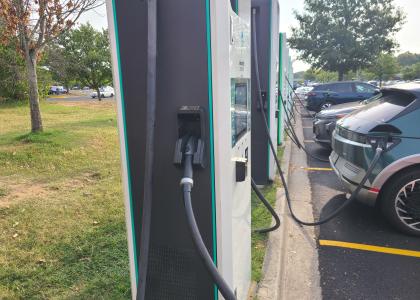Washington, DC—The American Council for an Energy-Efficient Economy released the following statement from Daivie Ghosh, senior research analyst, in response to the Environmental Protection Agency (EPA) issuing final new emissions standards for heavy-duty vehicles:
“These standards will spur wider adoption of proven electric truck technologies, reducing greenhouse gas emissions and local air pollutants while cutting costs for operators and their customers. It’s a big step forward for cleaning up the freight sector, but ensuring successful implementation will require trucking companies, charging station companies, and utilities and regulators to ramp up collaborative efforts.
“While many states already have policies ensuring more rapid adoption of electric trucks than these standards envision, the rules will help ramp up adoption nationwide. Residents living near trucking corridors in states that have not acted will particularly benefit from reduced pollution thanks to these standards.
“The final rule also leaves more work to be done, and state legislatures should spur use of electric and other zero-emission trucks by adopting the Advanced Clean Truck rule. By delaying the final standards for sleeper cabs until model year 2030 vehicles, EPA missed out on the additional climate and health benefits that would have started accruing much earlier from some of the highest-polluting vehicles on the roads.
“Everyone from truck manufacturers to fleet operators and companies building electric charging stations knows what they need to plan for now. Utilities have a big but achievable job ahead building the charging infrastructure that will soon be needed. Utilities and stakeholders can take advantage of the guidance provided by the recently released National Zero-Emission Freight Corridor Strategy.”
The standards announced today will reduce greenhouse gas emissions by 1 billion metric tons of CO2e and provide $13 billion in total net benefits to society through 2055, according to the EPA. The standards are technology-neutral average emissions requirements across each manufacturer’s sales that can be met with a combination of moving toward electric models as well as efficiency improvements to diesel trucks.


